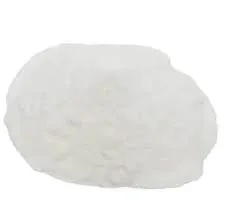
Oct . 22, 2024 08:47 Back to list
Understanding HPMC Safety and Implications for Pharmaceutical Applications
HPMC Safety Understanding and Mitigating Risks in Pharmaceutical Applications
Hydroxypropyl methylcellulose (HPMC) is a versatile polymer widely used in various industries, including pharmaceuticals, food, and cosmetics. In the pharmaceutical field, its applications range from being an excipient in drug formulations to serving as a critical component in controlled-release systems. Given its extensive use, understanding HPMC safety is crucial for manufacturers, healthcare professionals, and consumers alike.
What is HPMC?
HPMC is a cellulose derivative created through the chemical modification of cellulose, a natural polymer. It is primarily recognized for its ability to modify the viscosity of solutions, making it an essential component in tablets, capsules, and other dosage forms. Besides its thickening agent properties, HPMC also acts as a film-forming agent, stabilizer, and binding agent, contributing significantly to the efficacy and reliability of pharmaceutical products.
Safety Concerns
While HPMC is generally regarded as safe (GRAS) by regulatory agencies such as the FDA, some safety concerns still need to be addressed. The primary concerns revolve around the purity of the HPMC used in formulations and any potential contamination during manufacturing. HPMC is usually produced from high-grade cellulose, but impurities can arise if the production process is not stringently controlled.
Additionally, individuals with specific allergies or sensitivities to cellulose derivatives may experience adverse reactions, although these cases are rare. Some studies have indicated that inhalation of fine HPMC powder could lead to respiratory irritation, which emphasizes the need for proper handling and usage protocols, especially in manufacturing settings.
Regulatory Standards
Regulatory bodies have established various guidelines to ensure the safe use of HPMC in pharmaceutical preparations. The U.S. Pharmacopeia (USP) and European Pharmacopeia (EP) include specifications for HPMC quality, ensuring its purity and performance in drug formulations. Manufacturers must adhere to Good Manufacturing Practices (GMP), which necessitate rigorous testing for contaminants and consistency of HPMC batches.
hpmc safety

Risk Mitigation Strategies
To ensure HPMC safety, several risk mitigation strategies can be implemented throughout the product lifecycle
1. Quality Control Regular testing of HPMC for purity, viscosity, and other relevant parameters is essential. Employing advanced analytical techniques can help detect impurities and confirm compliance with regulatory standards.
2. Workplace Safety Protocols For manufacturers and compounding pharmacies, implementing strict safety protocols when handling HPMC can minimize inhalation risks. This includes using proper protective equipment (PPE) and maintaining adequate ventilation in work areas.
3. Training and Education Providing training for staff on the safe handling of HPMC and its derivatives is critical. Educating employees on potential hazards and the importance of following safety protocols can significantly reduce the risk of accidents.
4. Consumer Awareness Educating healthcare professionals and consumers about the safety profile of HPMC can help in making informed decisions regarding its usage. Clear labeling and communication from manufacturers about HPMC content can enhance transparency and trust.
5. Research and Development Ongoing research into the safety of HPMC and its potential alternatives can lead to improved products with even better safety profiles. Collaboration between academic institutions, regulatory bodies, and industry can drive innovation while ensuring consumer safety.
Conclusion
HPMC plays a vital role in the pharmaceutical industry, contributing to the effectiveness of various formulations. While it is generally considered safe, awareness of potential risks and stringent adherence to regulatory standards are crucial in mitigating these risks. By implementing robust safety protocols and fostering a culture of safety, stakeholders can ensure that HPMC continues to benefit patients and consumers without compromising their health and well-being.
-
Versatile Hpmc Uses in Different Industries
NewsJun.19,2025
-
Redispersible Powder's Role in Enhancing Durability of Construction Products
NewsJun.19,2025
-
Hydroxyethyl Cellulose Applications Driving Green Industrial Processes
NewsJun.19,2025
-
Exploring Different Redispersible Polymer Powder
NewsJun.19,2025
-
Choosing the Right Mortar Bonding Agent
NewsJun.19,2025
-
Applications and Significance of China Hpmc in Modern Industries
NewsJun.19,2025







